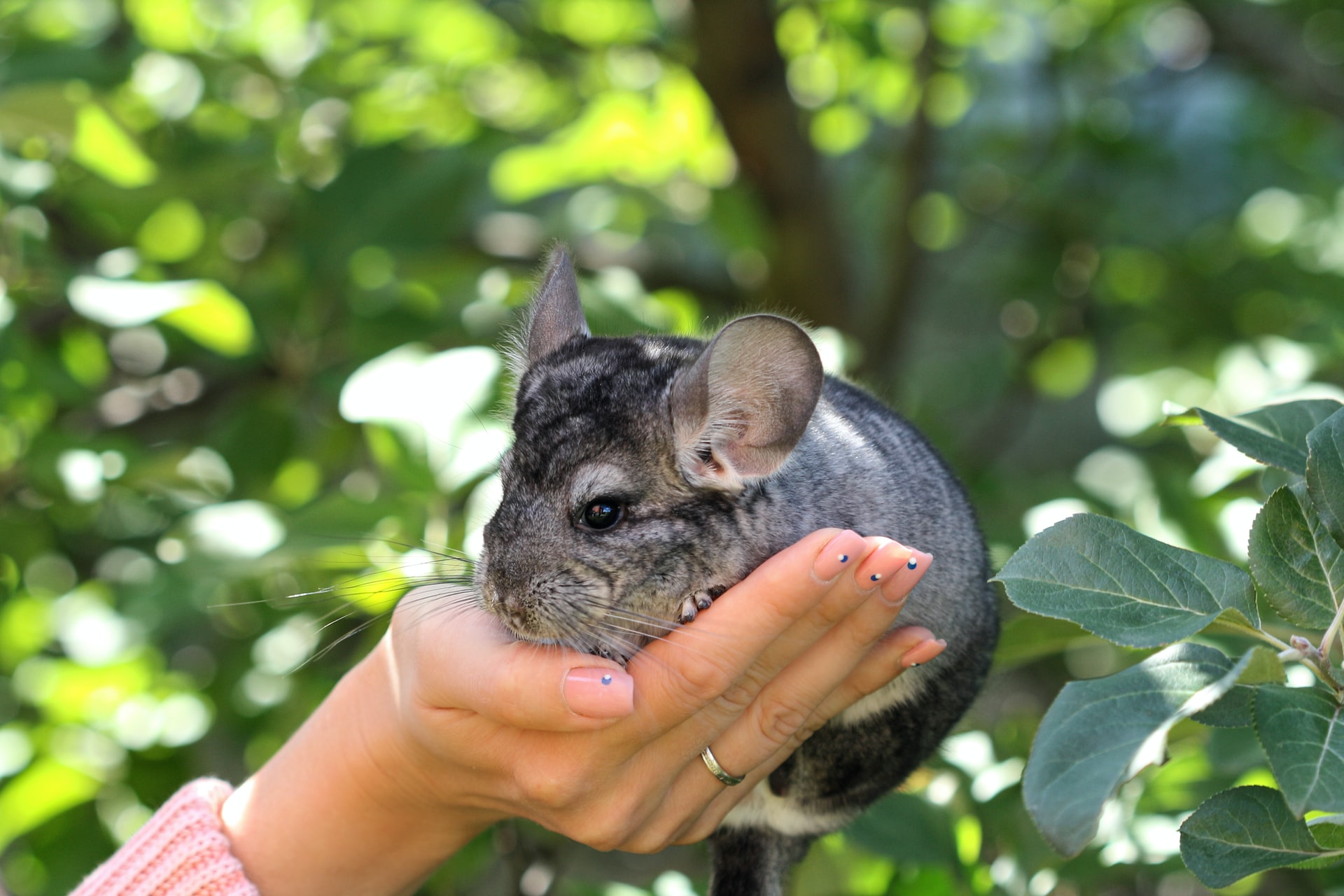When thinking about getting a pet, there is always the question of whether you can keep the pet alone or only as a pair or even in groups. Even with chinchillas, the question arises whether it is better to keep them in pairs.
Chinchillas are pack animals. You should never keep chinchillas alone, but at least in pairs. The best way to do this is to keep same-gender chinchillas as pets. You can also keep mixed-gender chinchillas, but neutering is relatively risky with chinchillas. If you have enough space, you should think about having a group of chinchillas.
Further on we will explain why you should not keep chinchillas alone and how chinchillas live in the wild. We also explain how to pair up chinchillas and what gender combinations work best.
We also briefly cover chinchilla reproduction and explain the risks of neutering. With this information, you will be able to make the right decision about acquiring chinchillas.
Are Chinchillas Better in Pairs?
Chinchillas are pack animals, so you should never keep them alone. Always keep at least one pair of chinchillas.
However, it is also possible to keep them in larger groups. This also corresponds to their natural way of life. However, you should not have more than one male chinchilla in the group.
Same-gender animals get along quite well if there are no animals of the opposite gender nearby. The animals should either have grown up together or be socialized at the same age if possible.
Keeping opposite gender pairs is only recommended if the buck is neutered. Otherwise, you can look forward to regular and numerous offspring.
However, castration is a high-risk procedure, especially for chinchillas. A lot of things can go wrong with them during this procedure. In the worst case, the chinchilla can die.
How Do Chinchillas Live in the Wild?
Originally, chinchillas are native to South America, they live in the Andean countries of Peru, Chile, Bolivia, and Argentina at altitudes of up to 5000 m. There they live in existing caves, rock crevices, and similar shelters.
There they are exposed to strong temperature fluctuations, hot summer days turn into cold nights. The temperature differences between day and night can be quite large.
Their fur protects them well from these weather influences, but the animals do not tolerate strong heat. Temperatures above 75°f can lead to heatstroke because the animals cannot cool themselves by sweating. They simply do not have sweat glands.
Therefore, chinchillas spend the hot days in their cool living caves and become active only in the evening.
The vegetation in their original habitat is rather sparse. Chinchillas feed on dry grasses, herbs, twigs, leaves, and cacti.
Chinchillas live in large groups, usually one male along with several females. During the day chinchillas sleep, only in the evening do they become lively.
They use the coolness and safety of the night to spend many hours foraging and socializing.
How to Socialize Chinchillas With Each Other
It is not easy to socialize chinchillas with each other. The animals have clear rankings within their group. Strange animals are not simply accepted as partners without further ado.
The group members must have the opportunity to get to know each other slowly and in peace. Bringing groups together or integrating an animal into an existing group is usually a bit more time-consuming than just putting two animals together.
Basically, it can take a few days or even weeks until all chinchillas get along well and the ranks within the group are clarified. However, some animals just don’t like each other and will then never get along.
Others may have been alone for so long that they don’t even seem to want to accept a partner.
Please don’t give up after the first failed socialization attempt, you certainly don’t like everyone else either. Always give the animal a second chance with a new partner!
Keeping an opposite gender pair has also proven successful with chinchillas. Of course, the male should be castrated.
Otherwise, there would be offspring permanently. This would then have to be regularly given into good hands, which is not easy.
However, chinchillas can also be kept in same-gender groups.
If possible, select two animals of the same age for socialization. Older females have tremendous dominant behavior and sometimes oppress younger animals.
If you choose a younger animal, the rank in the enclosure is clarified from the start and the animals are more likely to accept each other.
However, sleeping and playing habits change with age. This means considerable stress for both the younger and older animal.
Animals of the same age definitely have more in common. You should only attempt the socialization of a young animal with an old animal if the socialization with an animal of the same age has failed.
With larger groups, you should also always make sure that there are several animals of one age in the group. Combinations of several young animals with several old animals are also possible here.
Bring the animals together as young as possible. Later socialization is very problematic. You should leave this preferably up to experienced chinchilla keepers.
Ask your breeder or animal shelter if they can help you with the socialization. Make sure you can return the chinchilla if socialization does not work out.
New chinchillas definitely belong in quarantine for at least two weeks, as hard as it may be. Because even if your animal comes from good breeding, it can carry germs that are not present in your chinchillas.
Present the animal to your veterinarian and have it thoroughly examined. You should only socialize animals that are completely healthy. If an animal is sick, the veterinarian should approve the socialization.
What Gender Combinations Work Best in Chinchillas?
It depends on whether you want to keep just a pair of chinchillas or a whole group.
Basically, if there are females around, several unneutered male chinchillas can cause problems. So you should avoid this if possible.
The easiest way is to keep chinchillas of the same gender together. Due to their eagerness to reproduce, you could expect a lot of offspring otherwise. And castration is not without danger with chinchillas.
However, in their natural habitat, chinchillas live in groups. These groups usually consist of one male chinchilla and several female chinchillas.
So such a group is also possible for keeping as pets. Here, however, it is especially true that the male must be castrated. The annual offspring can quickly go into the dozens with several females.
And you must then find buyers for all these young animals, which will not be easy. Therefore, males should always be neutered when living with females.
Some Information About Chinchilla Breeding
Chinchillas are very diligent in terms of reproduction. Females can have offspring 2 to 3 times per year, with 1 to 4 young born each time. In rare cases, it can be even up to 6 babies.
Considering that chinchillas are reproductively mature at 6 to 8 months of age, their numbers can quickly explode if you are not careful.
If you then also keep in mind that chinchillas can live up to 22 years, you can imagine that soon there will be no more room for yourself in your house.
But there are also other reasons against breeding chinchillas. Pregnancy is very stressful in chinchillas, and there may be complications during birth or miscarriages and stillbirths. In the worst case, the mother animal will not survive pregnancy.
The so-called lethal factor also plays a role in chinchilla breeding. This is a gene defect, which is mainly carried by velvet animals like black velvet, brown velvet, or violet velvet.
These are not allowed to produce offspring among themselves, because the offspring of 2 chinchillas carrying the lethal factor will be born mutilated or dead.
Also, white chinchillas must not be mated with each other. Here the same problems occur as described above.
Chinchilla breeding is not an easy task. You should dare to do it only as an experienced and long-time chinchilla owner.
Is Neutering Chinchillas Risky?
Castration is a risky procedure for chinchillas. Nevertheless, it makes sense if you keep male and female chinchillas together.
However, you should consider whether it would not be advantageous to buy chinchillas of the same sex. This will save your pet from strenuous and risky surgery.
A lot of things can go wrong during neutering. Besides the known risks due to the anesthesia, the procedure itself is not without risk. And also the time afterward is not without dangers and problems.
It is even said that neutered males were no longer accepted as partners by their females. It also happens that castration is not successful and the female is mated.
Also, the death of the neuter as a late consequence is not rare. Some male chinchillas do not seem to tolerate the anesthesia well. They die in the weeks following neutering for seemingly no reason.
Even allergies to the suture material as well as inflammation at the scar are known and occur regularly.
With these many risks, we can only advise against keeping male and female chinchillas together.
Conclusion
Chinchillas should always be kept at least in pairs. Keeping them in a group is also recommended. This corresponds most closely to their natural way of life.
However, you must remember that if you keep male and female chinchillas together, they will multiply uncontrollably and in large numbers.
Therefore, chinchillas of the same gender are best suited for keeping as pets.

